There can be your advertisement
300x150
Creating a Wardrobe from IKEA PAX by Yourself. How Is It Possible?
The designer Erin Kestenbaum loves vintage furniture, cozy textures and homes with character. She runs a blog where she talks about all this and shares her own photos of objects. Erin's latest achievement is a fully equipped wardrobe room in an elegant wave blue color. In her blog, the designer posted a photo report and explained step by step how she managed to transform the IKEA 'PAX' into a full-fledged wardrobe. We present key excerpts from Erin's story.
Step One: Find an Inspiring Example
When I first started planning the perfect wardrobe, one of Jenne Wolf's projects caught my eye: I was attracted to the amazing deep wave blue color. I took that image as a general reference, deciding to make something exactly like it at home but with a much more modest budget.
Initially, I wanted to make everything from wood from scratch, but my husband brought me back to reality: we had never built wardrobes, not to mention sliding drawers, shelves and other things, and it would take forever.
So I started looking for a storage system that I could assemble myself and paint in the desired color. Obviously, IKEA's 'PAX' turned out to be the most convenient and budget-friendly option. I have redesigned IKEA furniture before, but here there were new conditions: I wanted to install lighting inside and completely redesign the drawers. If we had left them as they were, in our apartment designed in 1940s style, it wouldn't have fit in. Some people cover the drawers with doors, but we didn't want to clutter the already small space with unnecessary doors.
Step Two: Make a List of What You Actually Need
I wanted the wardrobe to look magnificent. For this, I needed baseboards, moldings, fillets, beautiful handles on sliding drawers and lighting. All this we added ourselves; the initial 'PAX' set didn't include any of these items. Then we also closed unused holes on the side walls, replaced metal hanging rods with wooden ones, primed everything and painted it.
Erin and Cory's wardrobe before and after the redesign
Step Three: Plan Sections and Content
For this, the IKEA 'PAX' planning tool on their website comes in handy. We calculated how much space we needed for long clothes (dresses, suits), medium (shirts, blouses), items hanging on separate hangers (pants, skirts), items stacked (t-shirts, jumpers, underwear) and how many shelves we needed for shoes. We categorized all storage types by clothing categories in an electronic spreadsheet and checked it as we worked on each section of the wardrobe. For example, I fold my jeans, while my husband prefers to hang them. He also follows a business style and has many shirts. All of this needs to be taken into account.
For reference: the wardrobe size is 426x182 cm, so we placed deeper sections (74 cm) on one side and narrower ones (33 cm) on the other. This way we saved space for comfortable passage between rows.
It's important to ensure that the space for the wardrobe is level. Otherwise, wardrobe sections won't fit snugly next to each other, and it will be a nightmare.
Step Four: Install Lighting
We ordered these plug-in light fixtures on Amazon and connected them to the switch. This created a wire chain, with each wire branching off from one of the chains to every section, and the rest continuing further. We knew that we would place rattan baskets on the top shelf, so we didn't worry about the wiring not being pre-planned. But if you're just planning a renovation, you can build in such an option as shelf lighting into your lighting plan.
The distance from the floor to the wardrobe and from the wardrobe to the ceiling should be equal everywhere, make sure of this. Lighting is installed at the very beginning.
Step Five: Install Baseboards, Moldings and Wooden Trim
We used baseboards from the Fashion Forward collection by Metrie: they pair perfectly with moldings and fillets that we planned during the finishing stage. The baseboards go around the perimeter of the room. For trim, we used poplar, planed it on a machine, and ensured that the molding was flush with the upper horizontal beam. The same poplar was used to form fillets for the side surfaces. We glued them, not using nails. Then we filled all gaps with Bondo spackle. At the very end, we installed the top molding, which completely closed all seams.
Step Six: Create Dream Drawers
We had a favorite dresser in the bathroom, which we used as a reference. So I knew what dream drawers looked like. The 'PAX' ones are completely different. Therefore, we took a poplar board again, sanded it and attached it to the drawers. Now they can be painted peacefully. We left the gaps between the drawers as they were.
Step Seven: Hide Holes and Wallpaper the Wardrobe Inside
An important detail: you don't notice it, but you would definitely notice that something is wrong if you didn't cover the gaps and unused holes that reveal it was originally an IKEA wardrobe.
At IKEA, you can buy packs of plugs designed to hide many holes in the 'PAX' system. Installing them is not easy, but the effort is worth it. We used 12 packs and left holes only where shelves were, to have the possibility to rehang them if needed.
After that, we pasted thick wallpaper for painting to form a perfectly smooth surface but with texture.

Step Eight: Prime and Paint
The main challenge was to paint the laminated surface of IKEA wardrobes. It turned out that it's completely doable. The secret is in the Zinnser BIN Shellac Primer. You have to use a respirator, but it's the only drawback: the material covers IKEA surfaces beautifully. In most hard-to-reach places, we applied the primer with a high-density foam roller and brush. The primer dries quickly, and after it dried, for authenticity we applied a second coat.
We painted the wardrobe with a sprayer, which came out super-professionally. Here's what to keep in mind:
- there should be many light sources;
- stock up on fine-grit sandpaper to immediately remove excess drips and splatters;
- prepare to clean the sprayer occasionally, as it will clog;
- check how the paint sprays before starting to better control the process;
- it's better to do several thin coats rather than one thick one.
We used Farrow and Ball Inchyra Blue from the Modern Eggshell collection. This is my favorite color: depending on lighting and time of day, it can change from peacock blue to dark green. Another paint option I can recommend is Benjamin Moore Advance: it holds up well on our bathroom dresser, and it's much cheaper.
Step Nine: Polish the Drawers
The paint should dry within a couple of days. After that, you can install the drawers. And only then the front panels. To make them flush with the trim we added, we inserted shims between the 'PAX' drawers and wooden fronts at each screw location so that the fronts would align flush.
Step Ten: Hooray, Handles!
And my favorite part - hardware. I settled on the Emtek brand and ordered beautiful heavy aged brass handles from them. We used a laser measure to ensure all handles were the same distance from the drawer edges.
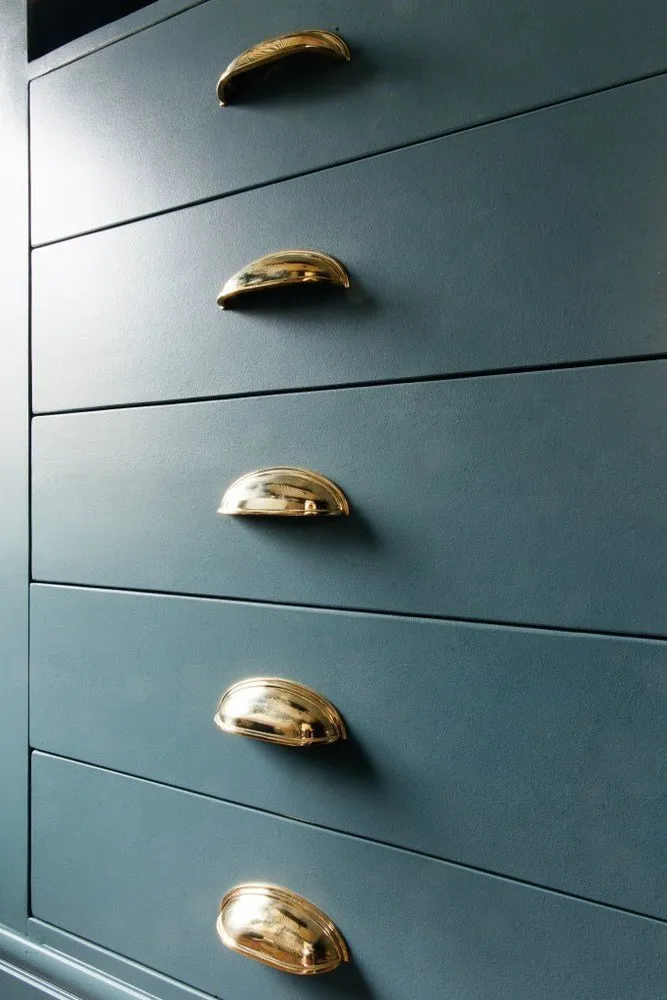
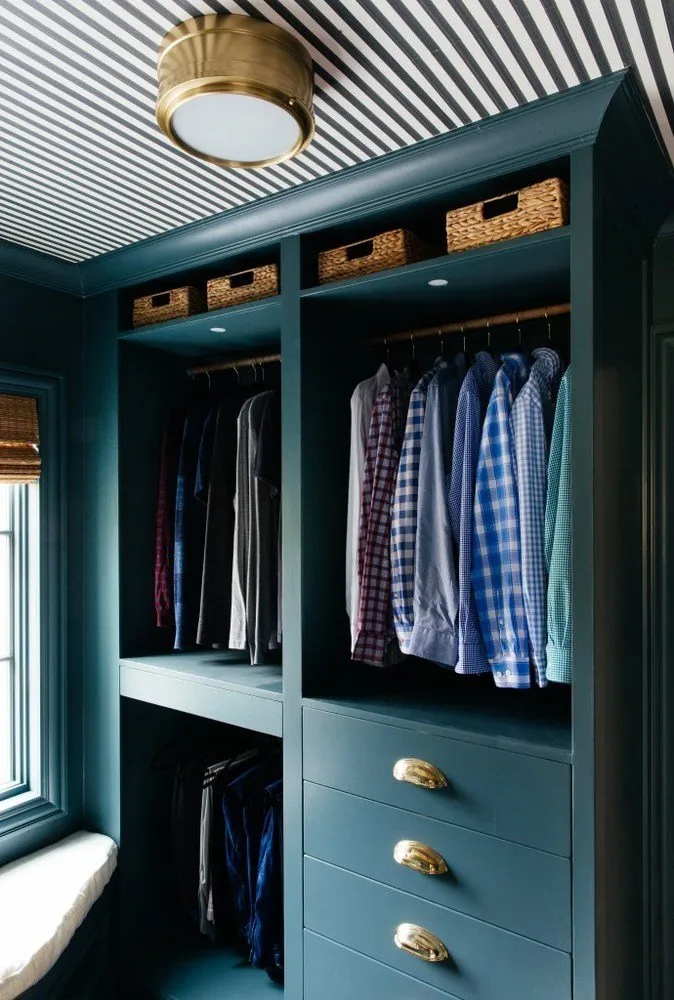

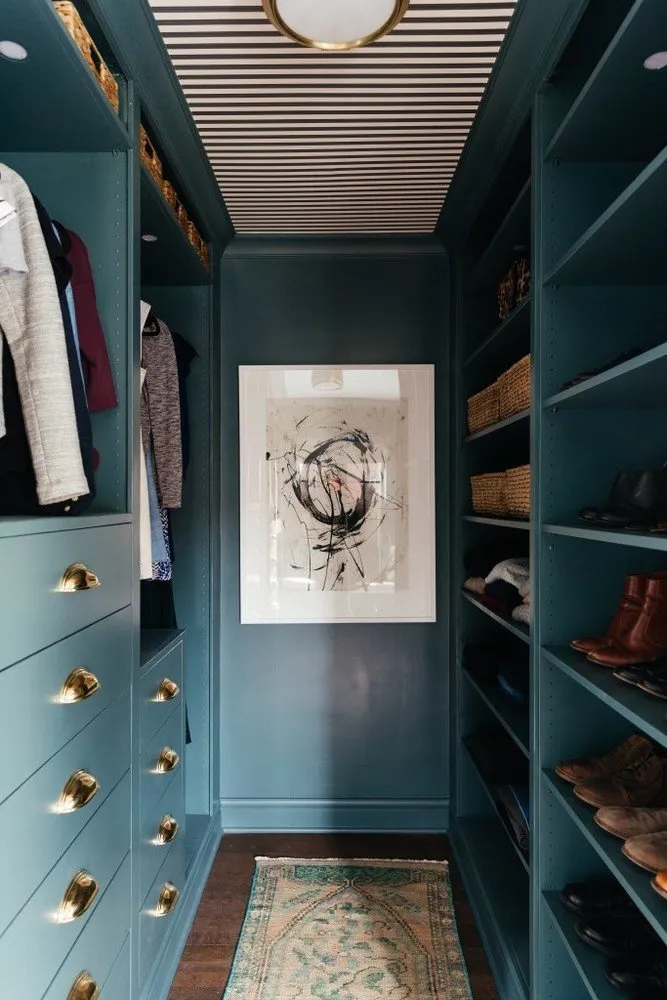
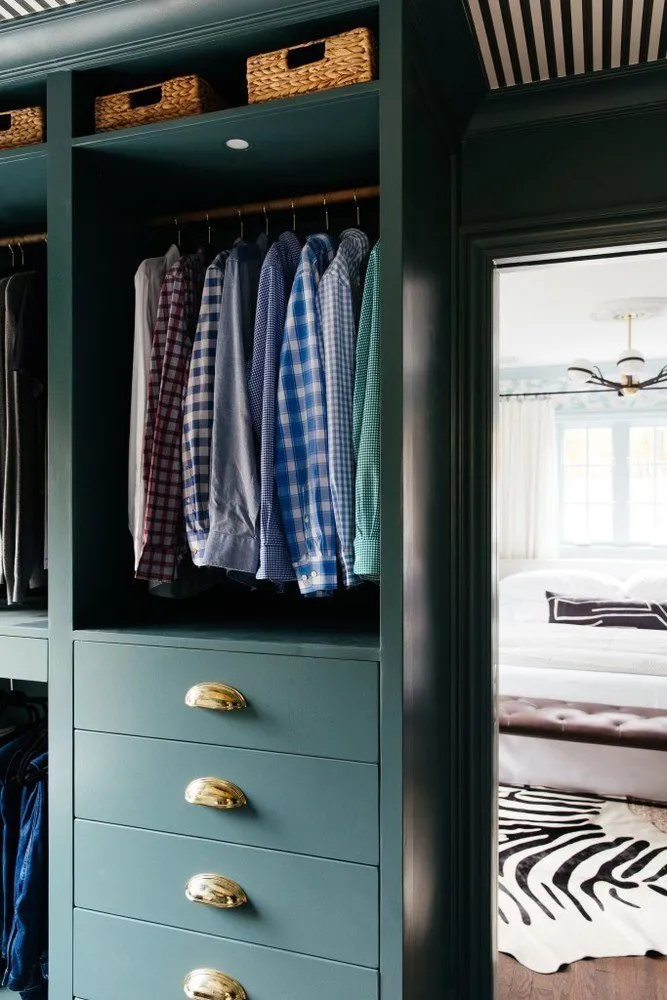
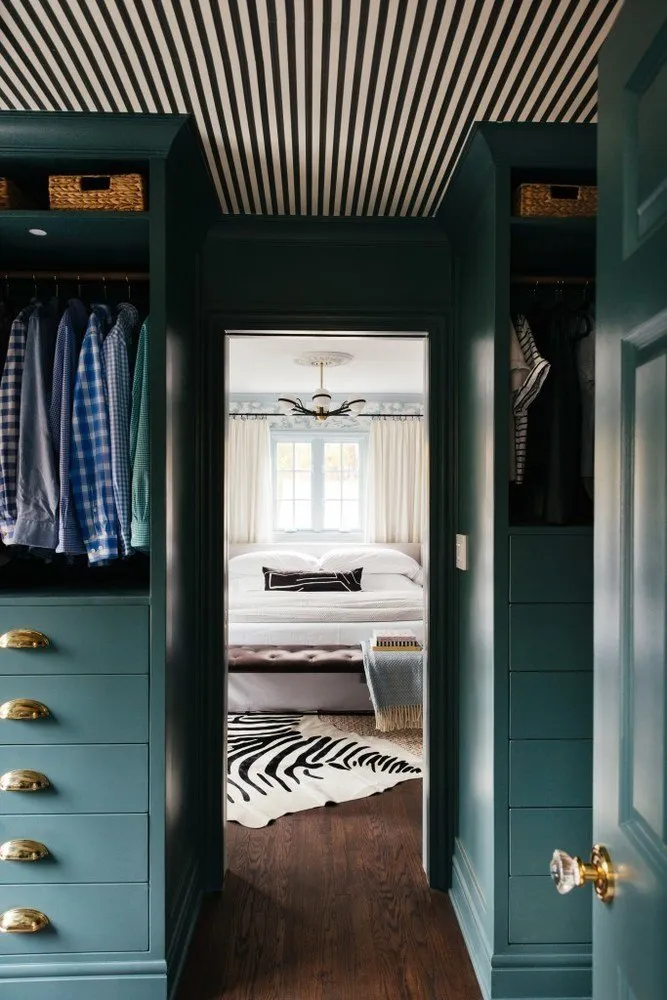
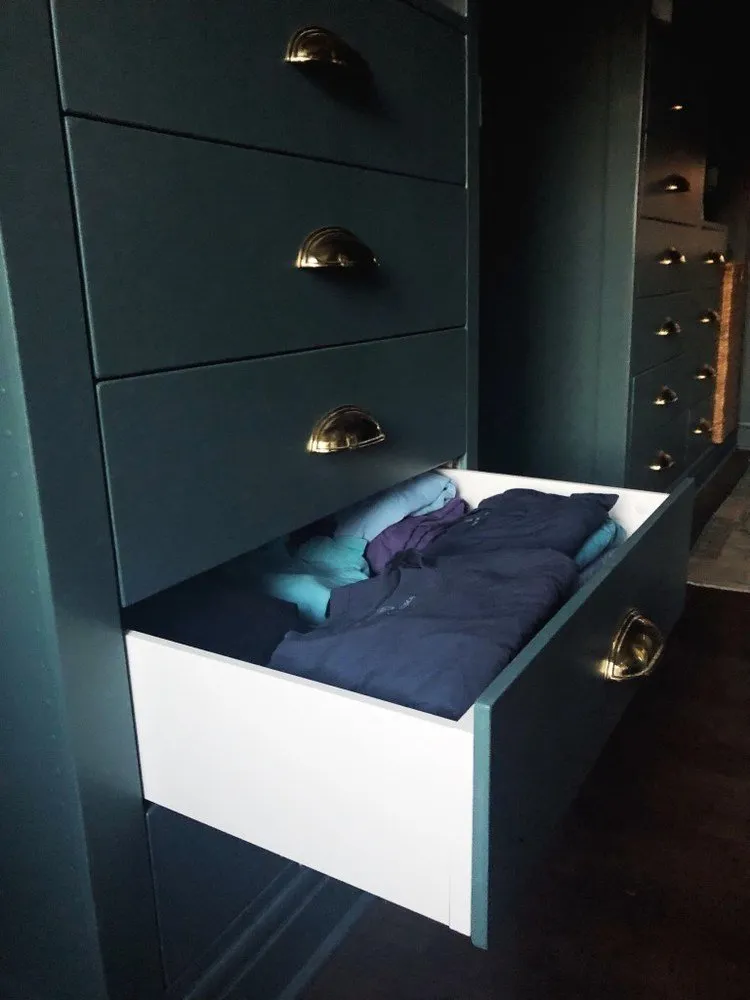
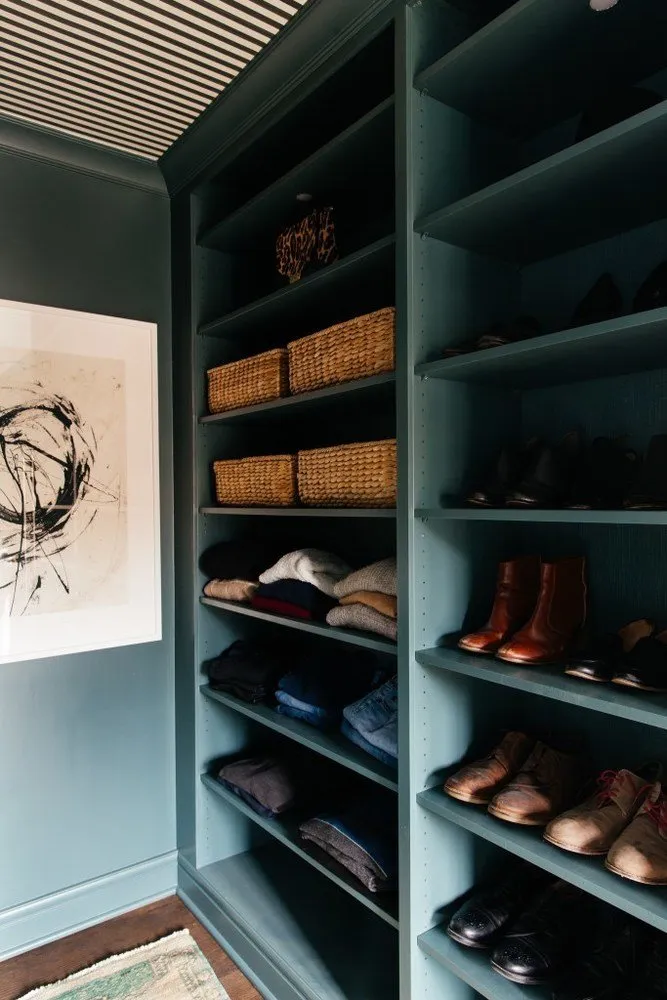

More articles:
 Get Ready for the New Year: 5 Solutions for Fast Apartment Renovation
Get Ready for the New Year: 5 Solutions for Fast Apartment Renovation Empty Wall? 10 Ideas for Decorating It
Empty Wall? 10 Ideas for Decorating It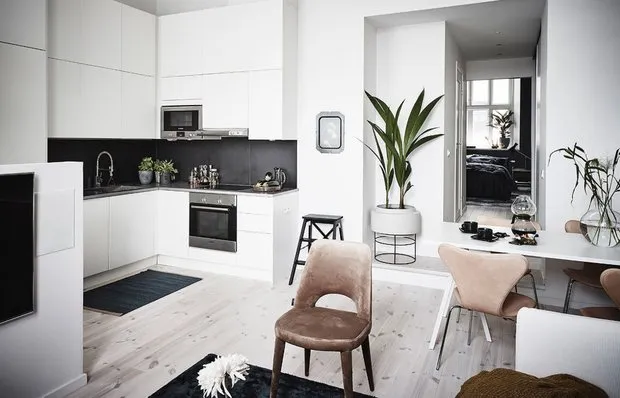 6 Ideas for Small Apartments Inspired by Stockholm
6 Ideas for Small Apartments Inspired by Stockholm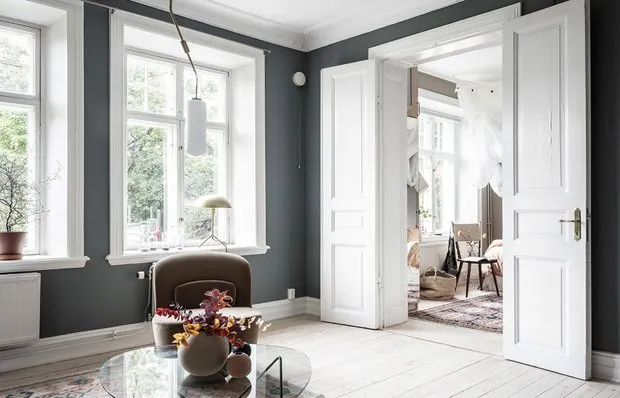 Excellent Idea: Grandma's Furniture in Scandinavian Interior
Excellent Idea: Grandma's Furniture in Scandinavian Interior How to Turn an Old Barn into a Dream Home
How to Turn an Old Barn into a Dream Home Wardrobe or Closet: Which One to Choose?
Wardrobe or Closet: Which One to Choose?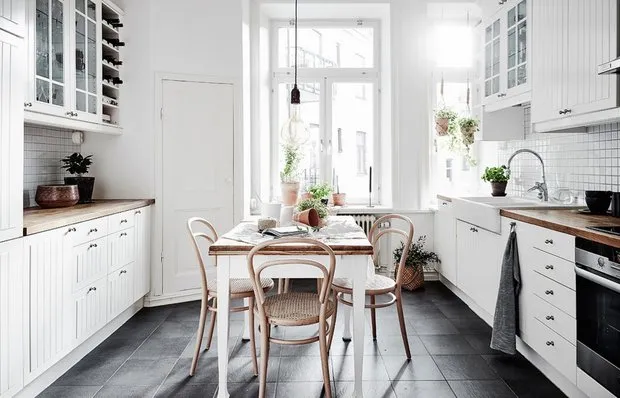 How Not to Ruin Your New Kitchen: 11 Pro Tips
How Not to Ruin Your New Kitchen: 11 Pro Tips How Did They Find Space for a Bedroom and Storage Systems in a Studio Apartment?
How Did They Find Space for a Bedroom and Storage Systems in a Studio Apartment?